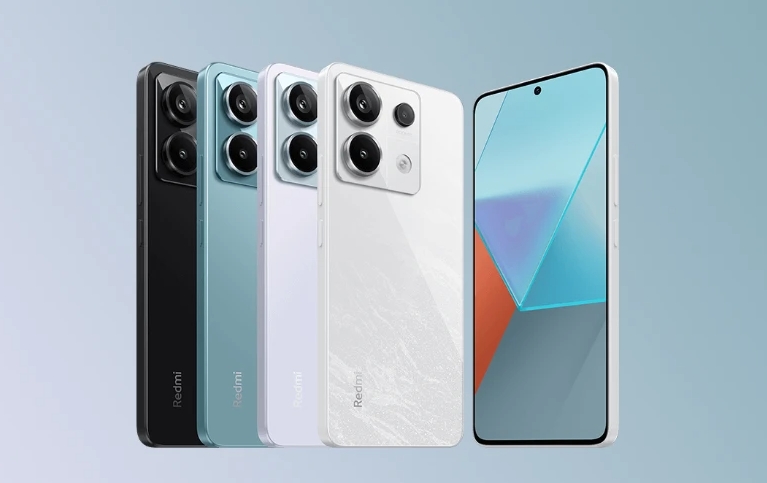Redmi Note 13 Pro+, Vivo V29, and Galaxy A54 Redmi Note 13 Pro+, Vivo V29, and Galaxy A54 are competing in the mid-range smartphone segment. Among them, the Dimensity 7200-Ultra chip on Redmi Note 13 Pro+ delivers superior performance compared to its two rivals. Performance is one of the most crucial factors that many users consider when choosing a smartphone in the upper mid-range segment. The Redmi Note 13 Pro+ (on the left) is equipped with the MediaTek Dimensity 7200-Ultra processor manufactured on a 4nm process.
Meanwhile, the Vivo V29 (in the middle) uses the Snapdragon 778G chip manufactured on a 6nm process. The Galaxy A54 (on the right) employs the Samsung Exynos 1380 chip with a 5nm process. Performance evaluation through the Antutu Benchmark software shows that the Redmi Note 13 Pro+ scores the highest with over 720,000 points.
The Vivo V29 and Galaxy A54 achieve relatively similar scores of around 610,000 and 585,000 points, respectively. The Dimensity 7200-Ultra chip (Redmi Note 13 Pro+) is equipped with an 8-core CPU with 2 Arm Cortex-A715 cores and an Arm Mali G610 GPU, providing significantly higher performance than the Snapdragon 778G (Vivo V29) and Samsung Exynos 1380 (Galaxy A54), resulting in smoother gaming experiences without lag.

Real-world testing with the game “Liên Quân Mobile” (Arena of Valor) shows that both the Redmi Note 13 Pro+ and Vivo V29 deliver a smooth experience, achieving 60fps with the highest graphics settings. Meanwhile, the Galaxy A54 cannot be set to the highest graphics settings. For a heavier game like PUBG Mobile, the Dimensity 7200-Ultra chip in the Redmi Note 13 Pro+ can achieve Ultra HDR graphics settings at a very high frame rate, thanks to the high-clock-speed Arm Cortex-A715 core.
In contrast, the Snapdragon 778G chip on the Vivo V29 and the Exynos 1380 on the Galaxy A54 only support up to HDR graphics settings. The Redmi Note 13 Pro+ integrates 3 cameras, including a 200MP main lens, an 8MP ultra-wide-angle lens, a 2MP macro lens, and AI camera features supported by the Dimensity 7200-Ultra chip. The Vivo V29 features a 50MP main camera, an 8MP ultra-wide-angle camera, and a 2MP depth-sensing camera. The Galaxy A54 also incorporates a 3-camera system, including a 50MP main sensor, a 12MP ultra-wide-angle lens, and a 5MP macro camera.

The Redmi Note 13 Pro+ features a CrystalRes AMOLED display with a high brightness of 1,800 nits, providing more vibrant colors than the other two models. The displays of the Redmi Note 13 Pro+ and Vivo V29 are both curved on both edges and have thin bezels. In contrast, the screen bezels of the Galaxy A54 are relatively thicker. The back of the Redmi Note 13 Pro+ is finished in a matte texture, helping to limit dust and fingerprints during use. In contrast, both the Vivo V29 and Galaxy A54 have glossy backs.
However, the 3D-shaped back design on the Vivo V29 makes the overall appearance more appealing. The Redmi Note 13 Pro+ houses a 5,000mAh battery, supporting 120W fast charging, taking only 19 minutes to charge fully. The Vivo V29 has a 4,600mAh battery with 80W fast charging. The Galaxy A54’s 5,000mAh battery supports 25W fast charging. Additionally, the MediaTek Dimensity 7200-Ultra chip (4nm process) on the Redmi Note 13 Pro+ also has better battery optimization capabilities than the Snapdragon 778G (6nm process) on the Vivo V29 and the Exynos 1380 (5nm process) on the Galaxy A54.



